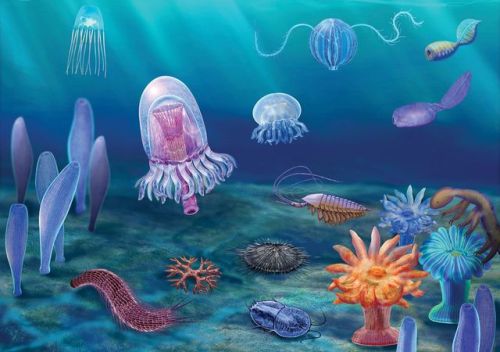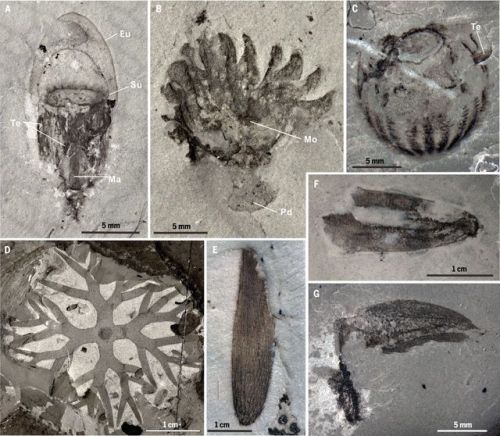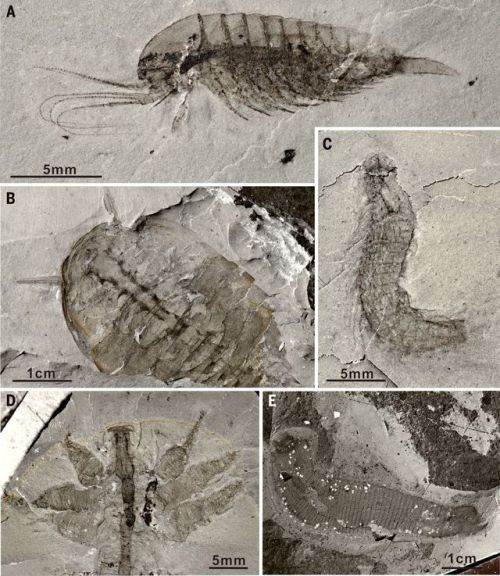Meet the Qingjiang Biota Lagerstätte are wonderful things. A Lagerstätte is a deposit cont
Meet the Qingjiang BiotaLagerstätte are wonderful things. A Lagerstätte is a deposit containing fossils that have preserved evidence of the soft tissues of animal or plant organisms that once lived in that environment. I think it’s safe to say that the most famous is likely the Burgess Shale, a Cambrian aged outcrop that, when it was found, showed the amazing types of body structures found in animals 500 million years ago. Other Lagerstätte have preserved feathers of dinosaurs and early mammalian structures.The nation of China holds a famous Cambrian aged Lagerstätte, the Chengjiang biota, a site of exceptional fossil preservation in southwestern China that has been declared a UNESCO World Heritage Site. The Chengjiang biota is actually older than the Burgess Shale, and combined the two deposits give the world easily it’s best record of animal development in the Cambrian.Meet the 3rd. This is the Qingjiang Biota, found on the edge of the Yangzte craton (a continental block in Central China about 1050 kilometers away from the Chengjiang site) and just published about in the journal Science. Like the Chengjiang biota and the Burgess Shale, this is a classic Lagerstätte containing remnants of the soft tissues of the organisms that lived in the waters at the time. This deposit is estimated to be 518 million years old, making it potentially slightly older than either of the other 2 Cambrian Lagerstätte deposits.Thus far, over 100 new fossil organisms have been characterized from this deposit; some of them are seen in these photos. Like the other Cambrian Lagerstätte settings, it is thought that organisms living in an ocean setting died and had their bodies transferred into deep water by submarine mass movements. Those mass movements took the bodies into oxygen-poor waters at the bottom of the ocean, and the lack of oxygen meant there were no scavengers to eat the bodies of these critters. As a consequence, their bodies and soft tissues were buried and preserved, and in the last 500 million years this rock has not been metamorphosed, preserving it to today.The fossil assemblage differs from both of the other 2 Cambrian Lagerstätte as this unit is thought to include organisms that lived in deeper water settings, farther away from the continents. This new discovery will profoundly shape our understanding of life in the Cambrian Ocean as it is studied over the next several decades.-JBBImage credit and original paper:http://science.sciencemag.org/content/363/6433/1338 -- source link
Tumblr Blog : the-earth-story.com
#lagerstätte#fossil#geology#fossils#china#fossilfriday#cambrian#research#science#paleontology#animal#ocean#sediment


